Few visitors to Romania come to Snagov Monastery. Fewer still have ever heard of it, in spite of its connection to the life (actually the death) of Count Dracula, the country’s most famous native. Technically, as a fictional character – and a vampire, Dracula didn’t live OR die. But his real-life counterpart, Vlad Țepeș (Vlad the Impaler), did end up at Snagov, maybe. Vlad the Impaler followed a human trajectory – he was born in Romania and died there. However, where and how his death happened, and where Vlad’s body was laid to rest, is cloaked in mystery. . . .
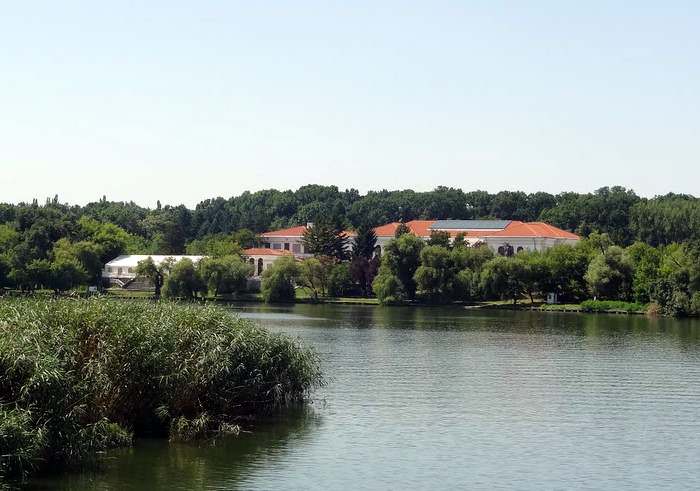
The posh villas around Snagov Lake include this one formerly owned by Ceaușescu.
Many historians claim that Comana Monastery, in Comana, Giurgiu County, about 37 kilometers south of Bucharest, is the most likely final resting place for the remains of the Impaler. This monastery-fortress was founded and built by Vlad in 1461 (some say 1471). Five hundred years later, a headless body was found during excavation work in the 1970s; it could have been that of the real-life Dracula. But Comana Monastery has been rebuilt several times since its founding, and today its church is a crisp, cheerful white with a red roof, two silver-topped cupolas, and a bright, vaguely byzantine air. Pretty yes, aesthetically significant, no. Atmospheric, zero.
My guide, Adrian, didn’t buy the Comana version of Dracula’s tomb. For years he has been accompanying his most-Dracula-obsessed clients to Snagov Monastery, sitting on a small island in the middle of Snagov Lake, about 30 kilometers north of Bucharest. Access is from the tiny village of Silestru.

Before the footbridge, you had to row your way to the Snagov Monastery, and the signs for that service remain.
The mystery surrounding Snagov Monastery begins with its origins. Some experts claim it was founded by the grandfather of Vlad Țepeș. Some say Țepeș ordered its construction himself. Other historians suggest that it dates from around 1408, meaning that neither Vlad (born in 1431) nor his grandfather was the likely founder. Romanian scholars point out that a wooden church has existed in this location since the 11th century. A defensive wall, a prison (some say a torture chamber), and an underwater tunnel were added sometime in the 15th century.
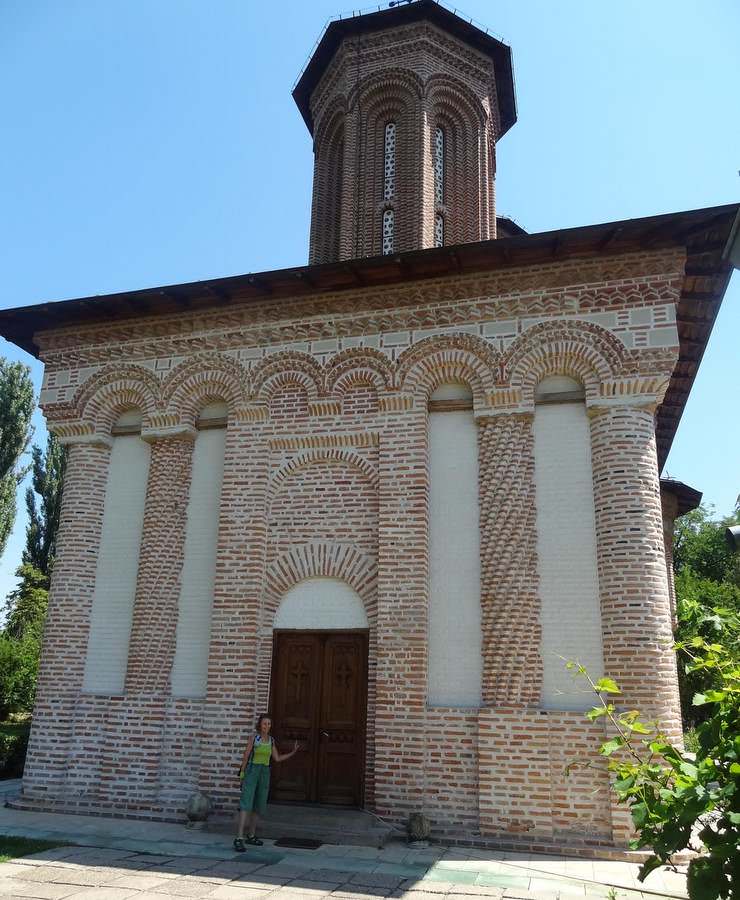
The Monastery Church
Vlad’s death continues the ambiguity. Scholars generally agree that he was killed in December 1476, but whether he died in battle against the Turks or was assassinated by political enemies from his own country has not been established conclusively. (Being an ill-tempered, bloodthirsty leader, Vlad had a LOT of enemies in Romania).
Scholars also generally believe that he was decapitated and that his head was taken to the Ottoman rulers in Constantinople. But his body? Team Comana points to the headless body and the documented connection between that monastery and Vlad. Team Snagov suggests that Vlad may have died not far from Lake Snagov and that logistics favored the latter location for interment of the body.
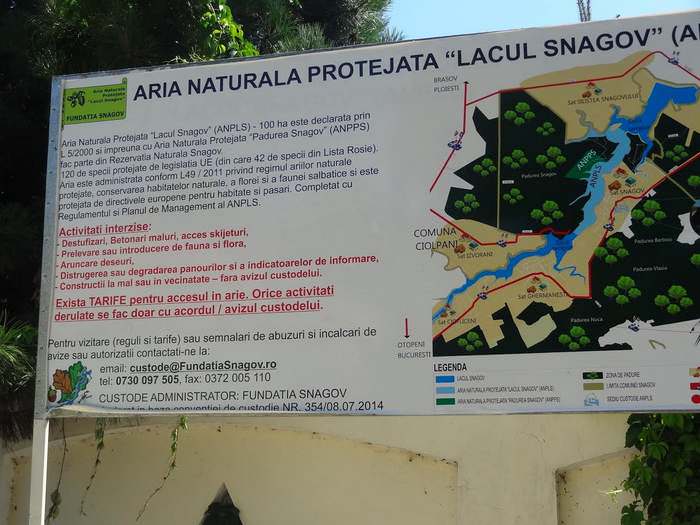
The area surrounding Snagov Monastery includes the lake and a protected forest.
The Story of Snagov Monastery
Every guide who accompanies you to Snagov will have a personal spin on the story, as will the occasional caretaker (do bring a translator if you don’t speak Romanian). This is the version I was given:
Vlad’s followers did not want to see their leader’s body defiled or used for propaganda purposes. So they buried him in this remote, inaccessible setting, with an additional precaution. They buried his body deep beneath the church floor. Above his tomb they created a false grave and filled it with animal bones. When researchers dug under the church in 1933 and found only the latter, the reaction by academics was, “This can’t be the right grave.” Reaction by the superstitious was, “The vampire has flown away.” The reaction from loyalists was, “He is still safe down there.”
The tomb is marked by a stone slab on the church floor. The rest of the monastery is not artistically significant. The current exterior is sand-colored brick with characteristic arches and four polygonal towers. The interior is ornate and brightly-colored as is the fashion with Romanian churches, but it can’t claim the aesthetic merits of, say, the wooden churches of Maramureş in northern Romania, recognized World Heritage sites. You will be asked to pay for the privilege of entering the church, so have Romanian lei on hand.
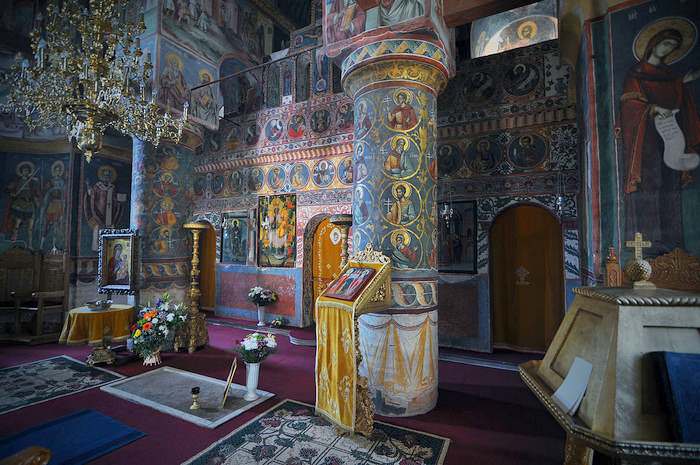
Interior of Monastery By fusion-of-horizons – Snagov, CC BY 2.0
Until recently, the only way to reach the monastery was to row a small boat from the shore. That meant manual rowing because motorboats were frowned on by the owners of the villas ringing Snagov Lake. This area is considered as posh and desirable by Bucharest’s nouveau riche today as it was under Nicolae Ceaușescu. Expensive vacation villas dot the shoreline. Adrian stopped to point out one especially opulent property that had been among the several dozen owned by the communist leader during his 24-year reign.
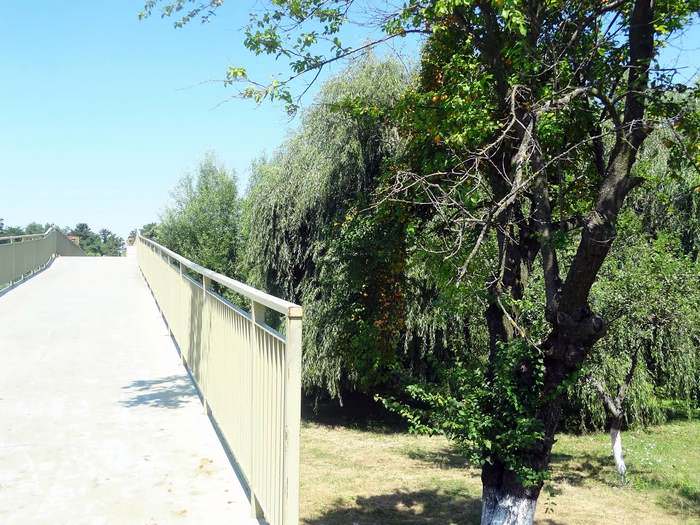
The footbridge leading to the island and the monastery in the middle of Snagov Lake.
Fortunately for Adrian and his fellow guides, a footbridge was constructed from the shore to the island in 2012. So one can walk to the island instead of arriving more suggestively –with more sweat – by boat. Or you can arrive as the bat flies . . . if you are a true believer.
Written by and photos by Claudia Flisi for EuropeUpClose.com

Tanja (the Red phone box travels)
Tuesday 15th of March 2016
so cool! I like Dracula stories:)
Joan Turner
Monday 14th of March 2016
I think it's time to visit Snagov Monastery!